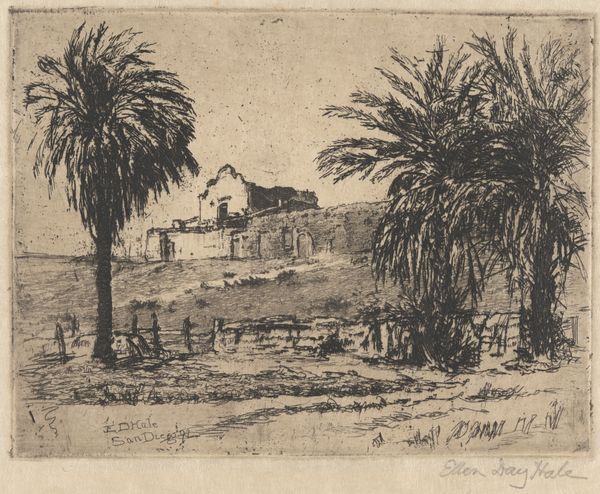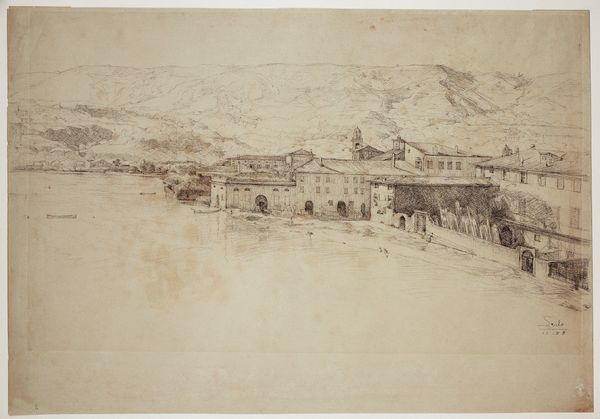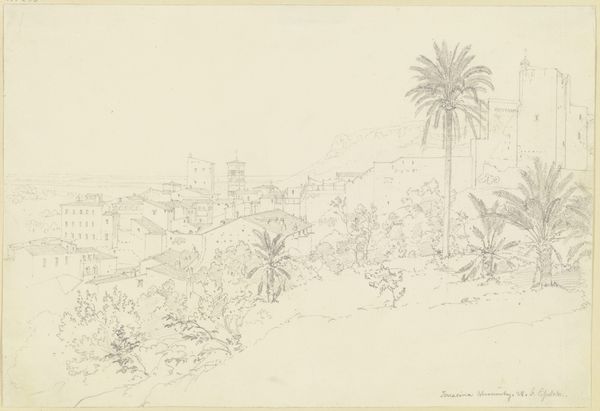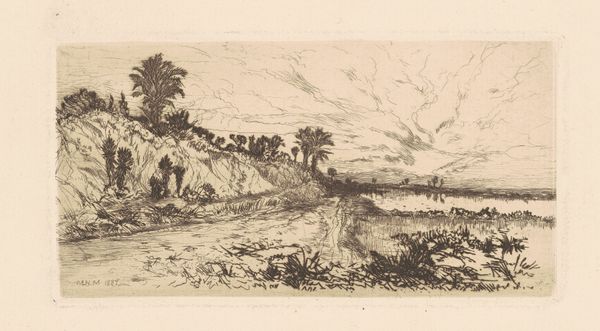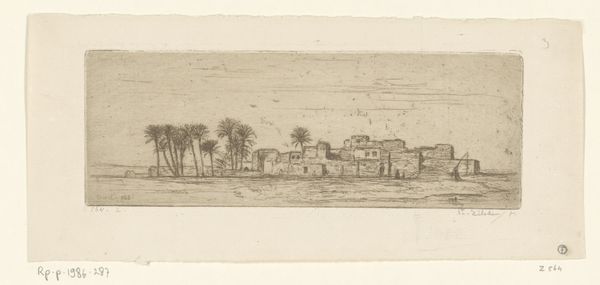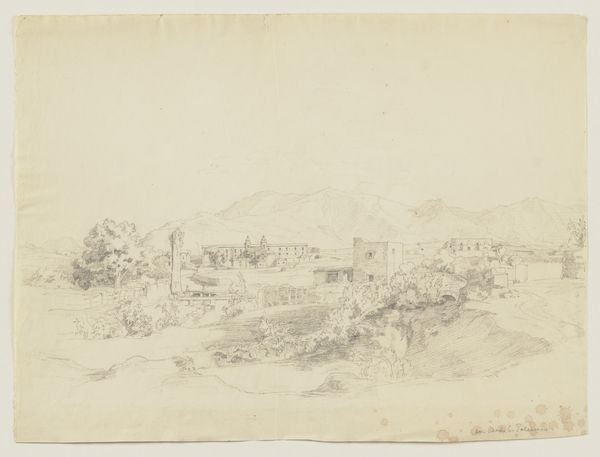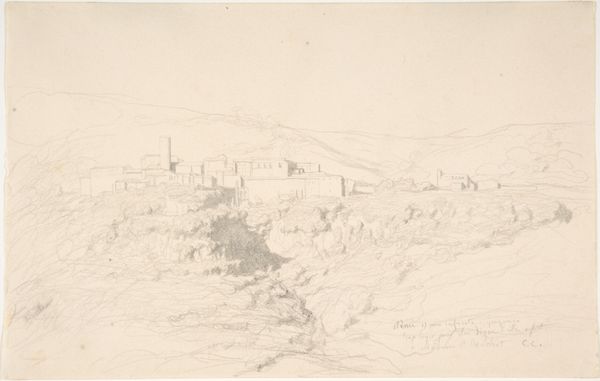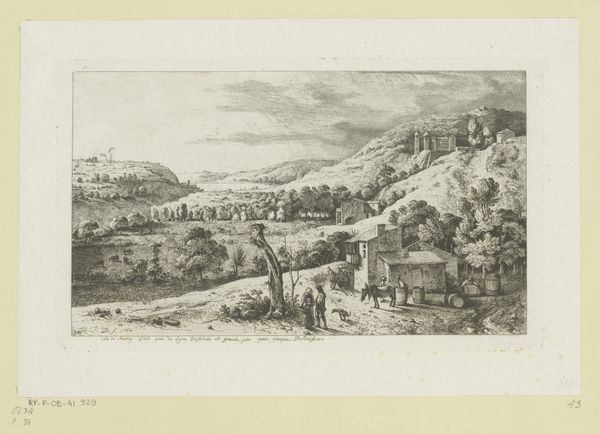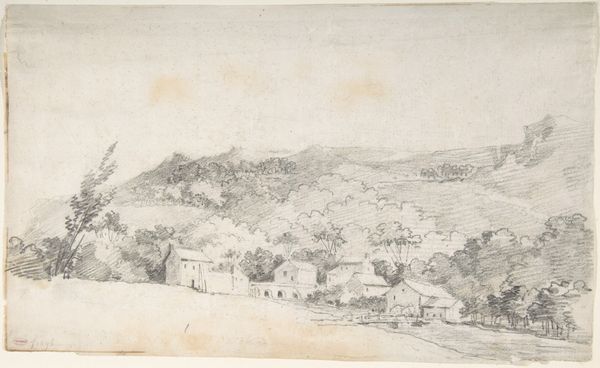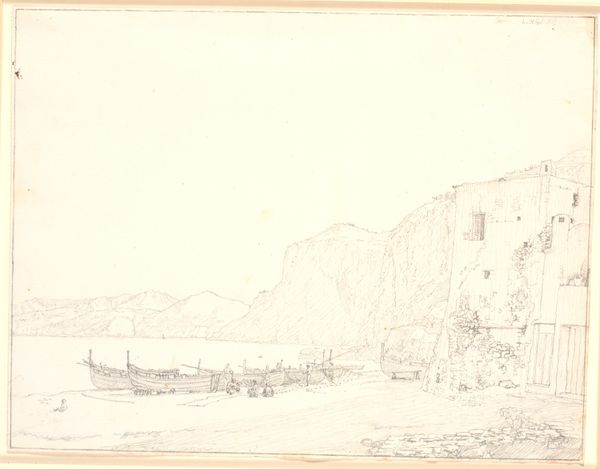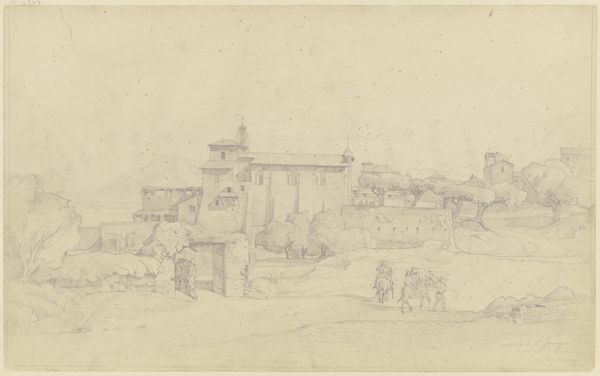
drawing, ink, pencil
#
drawing
#
pen sketch
#
landscape
#
ink
#
romanticism
#
pencil
Dimensions: 208 mm (height) x 266 mm (width) (bladmaal)
Editor: We're looking at "Greek Landscape, Vostiza" by Martinus Rørbye, created in 1836, using pencil and ink. It has a very serene feel; the lines are delicate but create a clear sense of depth and distance. What strikes you about it? Curator: The linear precision is remarkable. Note the meticulous strokes used to delineate the architectural forms, especially the central building. This ordered space contrasts with the implied wildness of the landscape, particularly visible in the horizon. Editor: So, you're seeing a dialogue between order and nature here? Curator: Precisely. Consider how the artist employed varied densities of hatching and cross-hatching. This distribution suggests the fall of light, thus creating visual textures that guide the eye. How does the rendering of the foliage affect your perception of depth? Editor: It's interesting. The foreground details are so fine, it gives the impression that the distant mountains are… almost an afterthought? Curator: An interesting observation. The subtlety might aim for capturing atmospheric perspective. Rørbye emphasizes the geometric clarity within the composition. Notice also how he places a detailed depiction of local life, making a distinction from an imagined scenery. Editor: That contrast you mentioned earlier is still so obvious, right? The way those defined shapes work with the almost ephemeral depiction of the distant landscape... it's all there, balanced delicately. I had not thought about it! Curator: And that interplay generates the artistic tension that renders this work compelling. The semiotic load is also significant when it comes to decoding what that palm tree really represents.
Comments
No comments
Be the first to comment and join the conversation on the ultimate creative platform.
